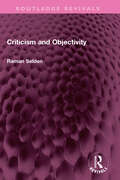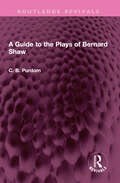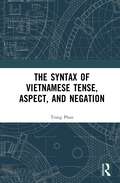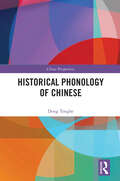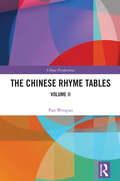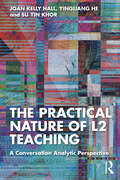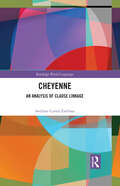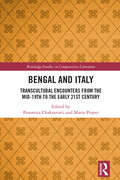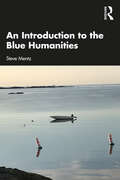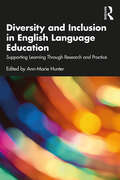- Table View
- List View
Criticism and Objectivity (Routledge Revivals)
by Raman SeldenFirst published in 1984 Criticism and Objectivity argues that literary critics should not abandon the concept of knowledge. English literary criticism has long considered ‘theory’ to be alien to the felt experience of readers and writers; the Romantic attitude towards reason and feeling has continued to inhibit the conceptual development of criticism. The similarities between the role of theory in science and in literary criticism imply the need for ‘objectivity’ to be redefined rather than abandoned. While accepting that tests are relatively open structures defying final interpretations, Dr Selden argues that their plurality is as much the effect of historical conditions as of the nature of language or subjectivity. He calls for an historical criticism capable of ‘conducting’ the voices of the text without resorting to formalism or reducing the text to its ‘background’. This book will be of interest to students of literary theory.
A Guide to the Plays of Bernard Shaw (Routledge Revivals)
by C. B. PurdomFirst Published in 1963 A Guide to the Plays of Bernard Shaw is a descriptive and critical account of Bernard Shaw’s work as a playwright. The leading ideas contained in the plays are discussed because they are relevant to the work of the dramatist, and the author has also commented on their original production as they were mostly done under Shaw’s direction. Author argues that if Shaw were to be reincarnated as a dramatic critic he would only too often be as scathing of the treatment of his plays upon the stage today as was G.B.S. when writing of the Shakespeare productions in the London theatre. This book is a must read for students of English literature.
A Guide to the Plays of Bernard Shaw (Routledge Revivals)
by C. B. PurdomFirst Published in 1963 A Guide to the Plays of Bernard Shaw is a descriptive and critical account of Bernard Shaw’s work as a playwright. The leading ideas contained in the plays are discussed because they are relevant to the work of the dramatist, and the author has also commented on their original production as they were mostly done under Shaw’s direction. Author argues that if Shaw were to be reincarnated as a dramatic critic he would only too often be as scathing of the treatment of his plays upon the stage today as was G.B.S. when writing of the Shakespeare productions in the London theatre. This book is a must read for students of English literature.
The Sea Years of Joseph Conrad (Routledge Revivals)
by Jerry AllenFirst Published in 1967 The Sea Years of Joseph Conrad is a major biography, a fruit of Jerry Allen’s ten years of extensive research making use of records located in fifteen countries, the majority never before published. The author has discovered and described in detail many of the real people and events developed by Conrad in his fiction. These includes his contact with the 1876 revolution in Columbia; the sensational Jeddah incident of 1880; the Congo episode behind Heart of Darkness; the American with whom Conrad fought a duel in Marseilles etc. Illustrated with many rare and previously unpublished photographs this book offers a fascinating narrative for the general reader and extensive material for the scholar.
The Sea Years of Joseph Conrad (Routledge Revivals)
by Jerry AllenFirst Published in 1967 The Sea Years of Joseph Conrad is a major biography, a fruit of Jerry Allen’s ten years of extensive research making use of records located in fifteen countries, the majority never before published. The author has discovered and described in detail many of the real people and events developed by Conrad in his fiction. These includes his contact with the 1876 revolution in Columbia; the sensational Jeddah incident of 1880; the Congo episode behind Heart of Darkness; the American with whom Conrad fought a duel in Marseilles etc. Illustrated with many rare and previously unpublished photographs this book offers a fascinating narrative for the general reader and extensive material for the scholar.
The Syntax of Vietnamese Tense, Aspect, and Negation
by Trang PhanThe Syntax of Vietnamese Tense, Aspect, and Negation investigates familiar grammatical phenomena including Tense, Aspect, and Negation in a theoretically understudied language, Vietnamese. The purpose of this book is to thoroughly examine how these categories are realised and how they interact with one another in Vietnamese in the spirit of Generative Grammar, in particular, the Cartographic approach to syntax and its most recently developed lexicalisation technique, Nanosyntax. It is concluded that despite lacking inflectional tense, Vietnamese does have syntactic tense, i.e., Vietnamese has those structural positions which are dedicated to Tense and Aspect. In fact, Tense and Aspect in Vietnamese are realised via a rigid fine-grained functional sequence which syntacticises subtle semantic distinctions both preverbally and post-verbally. There is a two-way complicated relationship between Negation and Aspect in Vietnamese, which can be explained in a principled way by taking into consideration how the internal syntax of the temporal, aspectual, and negative markers derives their clausal syntax. This book also discusses how Vietnamese Tense, Aspect, and Negation pattern with, and differ from, their counterparts in Western Indo-European languages, and how this study contributes to a better understanding of East and mainland Southeast Asian languages more generally, as well as of language universally. This book will be of interest to both undergraduate and postgraduate students of contemporary linguistics, and for scholars interested in contemporary approaches to Vietnamese linguistics, and Southeast Asian languages more generally.
The Syntax of Vietnamese Tense, Aspect, and Negation
by Trang PhanThe Syntax of Vietnamese Tense, Aspect, and Negation investigates familiar grammatical phenomena including Tense, Aspect, and Negation in a theoretically understudied language, Vietnamese. The purpose of this book is to thoroughly examine how these categories are realised and how they interact with one another in Vietnamese in the spirit of Generative Grammar, in particular, the Cartographic approach to syntax and its most recently developed lexicalisation technique, Nanosyntax. It is concluded that despite lacking inflectional tense, Vietnamese does have syntactic tense, i.e., Vietnamese has those structural positions which are dedicated to Tense and Aspect. In fact, Tense and Aspect in Vietnamese are realised via a rigid fine-grained functional sequence which syntacticises subtle semantic distinctions both preverbally and post-verbally. There is a two-way complicated relationship between Negation and Aspect in Vietnamese, which can be explained in a principled way by taking into consideration how the internal syntax of the temporal, aspectual, and negative markers derives their clausal syntax. This book also discusses how Vietnamese Tense, Aspect, and Negation pattern with, and differ from, their counterparts in Western Indo-European languages, and how this study contributes to a better understanding of East and mainland Southeast Asian languages more generally, as well as of language universally. This book will be of interest to both undergraduate and postgraduate students of contemporary linguistics, and for scholars interested in contemporary approaches to Vietnamese linguistics, and Southeast Asian languages more generally.
Historical Phonology of Chinese (China Perspectives)
by Dong TongheAs an important introduction to the phonological history of Chinese, this title explores the phonological systems of the Chinese language and explains basic concepts, materials and methodologies. Unlike many historical accounts, this book adopts a reverse chronological sequence – starting with the phonology of Modern Mandarin and modern Chinese dialects, then looking back on Early Mandarin and Middle Chinese, and ultimately ending with Old Chinese phonology. This arrangement makes the book reasonably approachable to both professionals and general readers, building up knowledge along an ascending order of difficulty, from familiar, observable facts to theoretical, speculative hypotheses. Based on the extant studies and two essential types of rhyme materials, the book reconstructs the speech sounds of Middle and Old Chinese, in terms of initials, finals and tones. It also analyses the transition and evolution of phonological systems of the Chinese language in different periods. Marking the beginning of historical Chinese phonological studies and drawing on modern Western linguistics, this book will serve as an essential read for students and researchers of Chinese language, Chinese linguistics and especially historical Chinese phonology.
The Chinese Rhyme Tables: Volume II (China Perspectives)
by Pan WenguoAs the second volume of a two-volume set that studies the Chinese rhyme tables, this book seeks to reconstruct the ancient rhyme tables based on the extant materials and findings. A rhyme table is a tabulated tool constituted by phonological properties, which helps indicate the pronunciation of sinograms or Chinese characters, marking an accurate and systematic account of the Chinese phonological system. The book first explores the relationship and identifies the prototype of the extant rhyme tables. Then the principles and methods for collating and rebuilding the ancient rhyme table are introduced. It then looks at the general layout, including tables, table order, shè, zhuǎn, rhyme heading, rhyme order, light and heavy articulations, rounded and unrounded articulations, and initials. The final chapter presents the reconstructed rhyme tables with detailed annotations and add-on indexes. The book will appeal to scholars and students studying Sinology, Chinese linguistics, and especially Chinese phonology.
Historical Phonology of Chinese (China Perspectives)
by Dong TongheAs an important introduction to the phonological history of Chinese, this title explores the phonological systems of the Chinese language and explains basic concepts, materials and methodologies. Unlike many historical accounts, this book adopts a reverse chronological sequence – starting with the phonology of Modern Mandarin and modern Chinese dialects, then looking back on Early Mandarin and Middle Chinese, and ultimately ending with Old Chinese phonology. This arrangement makes the book reasonably approachable to both professionals and general readers, building up knowledge along an ascending order of difficulty, from familiar, observable facts to theoretical, speculative hypotheses. Based on the extant studies and two essential types of rhyme materials, the book reconstructs the speech sounds of Middle and Old Chinese, in terms of initials, finals and tones. It also analyses the transition and evolution of phonological systems of the Chinese language in different periods. Marking the beginning of historical Chinese phonological studies and drawing on modern Western linguistics, this book will serve as an essential read for students and researchers of Chinese language, Chinese linguistics and especially historical Chinese phonology.
The Chinese Rhyme Tables: Volume II (China Perspectives)
by Pan WenguoAs the second volume of a two-volume set that studies the Chinese rhyme tables, this book seeks to reconstruct the ancient rhyme tables based on the extant materials and findings. A rhyme table is a tabulated tool constituted by phonological properties, which helps indicate the pronunciation of sinograms or Chinese characters, marking an accurate and systematic account of the Chinese phonological system. The book first explores the relationship and identifies the prototype of the extant rhyme tables. Then the principles and methods for collating and rebuilding the ancient rhyme table are introduced. It then looks at the general layout, including tables, table order, shè, zhuǎn, rhyme heading, rhyme order, light and heavy articulations, rounded and unrounded articulations, and initials. The final chapter presents the reconstructed rhyme tables with detailed annotations and add-on indexes. The book will appeal to scholars and students studying Sinology, Chinese linguistics, and especially Chinese phonology.
Explorations of Spirituality in American Women's Literature: The Aging Woman in the Image of God (Routledge Interdisciplinary Perspectives on Literature)
by Scarlett CunninghamThis book connects the aging woman to the image of God in the work of Flannery O’Connor, Joyce Carol Oates, Alicia Ostriker, Lucille Clifton, Mary Szybist, and Anne Babson. It introduces a canon of contemporary American women’s spiritual literature with the goal of showing how this literature treats aging and spirituality as major, connected themes. It demonstrates that such literature interacts meaningfully with feminist theology, social science research on aging and body image, attachment theory, and narrative identity theory. The book provides an interdisciplinary context for the relationship between aging and spirituality in order to confirm that US women’s writing provides unique illustrations of the interconnections between aging and spirituality signaled by other fields. This book demonstrates that relationships between the human and divine remain a consistent and valuable feature of contemporary women’s literature and that the divine–human relationship is under constant literary revision.
Explorations of Spirituality in American Women's Literature: The Aging Woman in the Image of God (Routledge Interdisciplinary Perspectives on Literature)
by Scarlett CunninghamThis book connects the aging woman to the image of God in the work of Flannery O’Connor, Joyce Carol Oates, Alicia Ostriker, Lucille Clifton, Mary Szybist, and Anne Babson. It introduces a canon of contemporary American women’s spiritual literature with the goal of showing how this literature treats aging and spirituality as major, connected themes. It demonstrates that such literature interacts meaningfully with feminist theology, social science research on aging and body image, attachment theory, and narrative identity theory. The book provides an interdisciplinary context for the relationship between aging and spirituality in order to confirm that US women’s writing provides unique illustrations of the interconnections between aging and spirituality signaled by other fields. This book demonstrates that relationships between the human and divine remain a consistent and valuable feature of contemporary women’s literature and that the divine–human relationship is under constant literary revision.
The Practical Nature of L2 Teaching: A Conversation Analytic Perspective
by Joan Kelly Hall Yingliang He Su Yin KhorDrawing on video recordings and transcripts from a wide range of L2 teaching contexts, The Practical Nature of L2 Teaching presents a comprehensive examination of eight sets of specialized actions and action sequences involved in whole group instruction. Each of the chapters highlights in exquisite detail the sophisticated, real-world accomplishment of L2 teaching. The purpose is not to impose a vision of how L2 teaching should be done. Instead, it is to illuminate its complexities and, in so doing, reveal informative differences between idealized understandings of L2 teaching and its lived realities. The book is essential reading for advanced undergraduates, graduate students, and researchers studying and working in the areas of classroom interaction, L2 teaching, and L2 teacher education.
The Practical Nature of L2 Teaching: A Conversation Analytic Perspective
by Joan Kelly Hall Yingliang He Su Yin KhorDrawing on video recordings and transcripts from a wide range of L2 teaching contexts, The Practical Nature of L2 Teaching presents a comprehensive examination of eight sets of specialized actions and action sequences involved in whole group instruction. Each of the chapters highlights in exquisite detail the sophisticated, real-world accomplishment of L2 teaching. The purpose is not to impose a vision of how L2 teaching should be done. Instead, it is to illuminate its complexities and, in so doing, reveal informative differences between idealized understandings of L2 teaching and its lived realities. The book is essential reading for advanced undergraduates, graduate students, and researchers studying and working in the areas of classroom interaction, L2 teaching, and L2 teacher education.
Cheyenne: An Analysis of Clause Linkage (Routledge World Languages)
by Avelino Corral EstebanCheyenne: An Analysis of Clause Linkage provides a detailed description of Cheyenne syntax, semantics, and pragmatics, notably on its nominal and verbal system and in both simple and complex sentences. Based on fieldwork conducted on the Northern Cheyenne reservation, this book, which seeks to address descriptive and theoretical issues involving complex sentences, has three major aims: i) to present a morpho-syntactic, semantic, and discourse-pragmatic description of complex sentences in Cheyenne; ii) to investigate the relationship between the semantic and syntactic dimensions of complex sentences; and iii) to contribute to the research, preservation, and revitalization of this ancestral language spoken in the United States of America. This book will be informative for scholars interested in language typology, comparative linguistics, theoretical linguistics, and language documentation, as well as those interested in Cheyenne learning and teaching.
Cheyenne: An Analysis of Clause Linkage (Routledge World Languages)
by Avelino Corral EstebanCheyenne: An Analysis of Clause Linkage provides a detailed description of Cheyenne syntax, semantics, and pragmatics, notably on its nominal and verbal system and in both simple and complex sentences. Based on fieldwork conducted on the Northern Cheyenne reservation, this book, which seeks to address descriptive and theoretical issues involving complex sentences, has three major aims: i) to present a morpho-syntactic, semantic, and discourse-pragmatic description of complex sentences in Cheyenne; ii) to investigate the relationship between the semantic and syntactic dimensions of complex sentences; and iii) to contribute to the research, preservation, and revitalization of this ancestral language spoken in the United States of America. This book will be informative for scholars interested in language typology, comparative linguistics, theoretical linguistics, and language documentation, as well as those interested in Cheyenne learning and teaching.
Bengal and Italy: Transcultural Encounters from the Mid-19th to the Early 21st Century (Routledge Studies in Comparative Literature)
The ten essays collected in this book manifest the current global interest for trans-border dialogues and trace the origins and development of Italian and Bengali internationalisms in the period from the mid-19th to the early 20th century. Despite having differing political statuses and lacking a shared geographical or historical space, Bengal and Italy remained uniquely connected and, at times, actively sought to transcend different kinds of constraints in their search for a significant dialogue and mutual enrichment in the fields of literature, music, architecture, art, cinema, diplomacy, entrepreneurship, travels, education and intellectual engagement. In this context, the volume confronts strategies of evaluation adopted by prominent representatives of the Bengali and Italian cultural environments with particular emphasis on readings embedded in the moment of contact. Both regions benefited from this ‘elective affinity’ as they advanced along their respective paths towards a fuller awareness of their specific identity, and thus set a positive example of transcultural understanding which may provide inspiration in today’s world.
Bengal and Italy: Transcultural Encounters from the Mid-19th to the Early 21st Century (Routledge Studies in Comparative Literature)
by Paromita Chakravarti Mario PrayerThe ten essays collected in this book manifest the current global interest for trans-border dialogues and trace the origins and development of Italian and Bengali internationalisms in the period from the mid-19th to the early 20th century. Despite having differing political statuses and lacking a shared geographical or historical space, Bengal and Italy remained uniquely connected and, at times, actively sought to transcend different kinds of constraints in their search for a significant dialogue and mutual enrichment in the fields of literature, music, architecture, art, cinema, diplomacy, entrepreneurship, travels, education and intellectual engagement. In this context, the volume confronts strategies of evaluation adopted by prominent representatives of the Bengali and Italian cultural environments with particular emphasis on readings embedded in the moment of contact. Both regions benefited from this ‘elective affinity’ as they advanced along their respective paths towards a fuller awareness of their specific identity, and thus set a positive example of transcultural understanding which may provide inspiration in today’s world.
An Introduction to the Blue Humanities
by Steve MentzAn Introduction to the Blue Humanities is the first textbook to explore the many ways humans engage with water, utilizing literary, cultural, historical, and theoretical connections and ecologies to introduce students to the history and theory of water-centric thinking. Comprised of multinational texts and materials, each chapter will provide readers with a range of primary and secondary sources, offering a fresh look at the major oceanic regions, saltwater and freshwater geographies, and the physical properties of water that characterize the Blue Humanities. Each chapter engages with carefully chosen primary texts, including frequently taught works such as Herman Melville’s Moby-Dick, Samuel Taylor Coleridge’s “Rime of the Ancient Mariner,” Homer’s Odyssey, and Luis Vaz de Camões’s Lusíads, to provide the perfect pedagogy for students to develop an understanding of the Blue Humanities chapter by chapter. Readers will gain insight into new trends in intellectual culture and the enduring history of humans thinking with and about water, ranging across the many coastlines of the World Ocean to Pacific clouds, Mediterranean lakes, Caribbean swamps, Arctic glaciers, Southern Ocean rainstorms, Atlantic groundwater, and Indian Ocean rivers. Providing new avenues for future thinking and investigation of the Blue Humanities, this volume will be ideal for both undergraduate and graduate courses engaging with the environmental humanities and oceanic literature.
Diversity and Inclusion in English Language Education: Supporting Learning Through Research and Practice
This edited volume takes an expansive, no-nonsense view of the spectrum of English language learners to address their varied backgrounds and their wide range of needs, worries, motivations, and abilities. Each chapter addresses a key area and group of students to enable English language teachers to come away with the knowledge and skills they need to support their students. The contributors, who represent a diverse range of voices themselves, cover essential topics, including dyslexia, neurodiversity, linguistic inclusion, deaf students, LGBTQI+ students, racial and cultural inclusion, and more. Accessible and grounded in cutting-edge research, this book features key concepts, methodologies, and strategies that will encourage reflection and inclusive pedagogy. An invaluable resource for students, researchers, and professionals, this volume demonstrates how English language education can be a force for transformative change and social inclusion.
Translation and Stylistic Variation: Dialect and Heteroglossia in Northern Irish Poetic Translation (Routledge Studies in Literary Translation)
by Helen GibsonTranslation and Stylistic Variation: Dialect and Heteroglossia in Northern Irish Poetic Translation considers the ways in which translators use stylistic variation, analysing the works of three Northern Irish poet-translators to look at how, in this variety, the translation process becomes a creative act by which translators can explore their own linguistic and cultural heritage. The volume offers a holistic portrait of the use of linguistic variety – dialect and heteroglossia – in the literary translations of Seamus Heaney, Ciaran Carson, and Tom Paulin, shedding light on the translators’ choices but also readers’ experiences of them. Drawing on work from cognitive stylistics, Gibson reflects on how and why translators choose to add linguistic variety and how these choices can often be traced back to their socio-cultural context. The book not only extends existing scholarship on Irish-English literary translation to examine issues unique to Northern Ireland but also raises broader questions about translation in locations where language choice is fraught and political. The volume makes the case for giving increased consideration to the role of the individual translator, both for insights into personal choices and a more nuanced understanding of contemporary literary translation practices, in Ireland and beyond. This book will be of interest to scholars working in translation studies, literary studies and Irish studies.
An Introduction to the Blue Humanities
by Steve MentzAn Introduction to the Blue Humanities is the first textbook to explore the many ways humans engage with water, utilizing literary, cultural, historical, and theoretical connections and ecologies to introduce students to the history and theory of water-centric thinking. Comprised of multinational texts and materials, each chapter will provide readers with a range of primary and secondary sources, offering a fresh look at the major oceanic regions, saltwater and freshwater geographies, and the physical properties of water that characterize the Blue Humanities. Each chapter engages with carefully chosen primary texts, including frequently taught works such as Herman Melville’s Moby-Dick, Samuel Taylor Coleridge’s “Rime of the Ancient Mariner,” Homer’s Odyssey, and Luis Vaz de Camões’s Lusíads, to provide the perfect pedagogy for students to develop an understanding of the Blue Humanities chapter by chapter. Readers will gain insight into new trends in intellectual culture and the enduring history of humans thinking with and about water, ranging across the many coastlines of the World Ocean to Pacific clouds, Mediterranean lakes, Caribbean swamps, Arctic glaciers, Southern Ocean rainstorms, Atlantic groundwater, and Indian Ocean rivers. Providing new avenues for future thinking and investigation of the Blue Humanities, this volume will be ideal for both undergraduate and graduate courses engaging with the environmental humanities and oceanic literature.
Diversity and Inclusion in English Language Education: Supporting Learning Through Research and Practice
by Ann-Marie HunterThis edited volume takes an expansive, no-nonsense view of the spectrum of English language learners to address their varied backgrounds and their wide range of needs, worries, motivations, and abilities. Each chapter addresses a key area and group of students to enable English language teachers to come away with the knowledge and skills they need to support their students. The contributors, who represent a diverse range of voices themselves, cover essential topics, including dyslexia, neurodiversity, linguistic inclusion, deaf students, LGBTQI+ students, racial and cultural inclusion, and more. Accessible and grounded in cutting-edge research, this book features key concepts, methodologies, and strategies that will encourage reflection and inclusive pedagogy. An invaluable resource for students, researchers, and professionals, this volume demonstrates how English language education can be a force for transformative change and social inclusion.
Translation and Stylistic Variation: Dialect and Heteroglossia in Northern Irish Poetic Translation (Routledge Studies in Literary Translation)
by Helen GibsonTranslation and Stylistic Variation: Dialect and Heteroglossia in Northern Irish Poetic Translation considers the ways in which translators use stylistic variation, analysing the works of three Northern Irish poet-translators to look at how, in this variety, the translation process becomes a creative act by which translators can explore their own linguistic and cultural heritage. The volume offers a holistic portrait of the use of linguistic variety – dialect and heteroglossia – in the literary translations of Seamus Heaney, Ciaran Carson, and Tom Paulin, shedding light on the translators’ choices but also readers’ experiences of them. Drawing on work from cognitive stylistics, Gibson reflects on how and why translators choose to add linguistic variety and how these choices can often be traced back to their socio-cultural context. The book not only extends existing scholarship on Irish-English literary translation to examine issues unique to Northern Ireland but also raises broader questions about translation in locations where language choice is fraught and political. The volume makes the case for giving increased consideration to the role of the individual translator, both for insights into personal choices and a more nuanced understanding of contemporary literary translation practices, in Ireland and beyond. This book will be of interest to scholars working in translation studies, literary studies and Irish studies.
